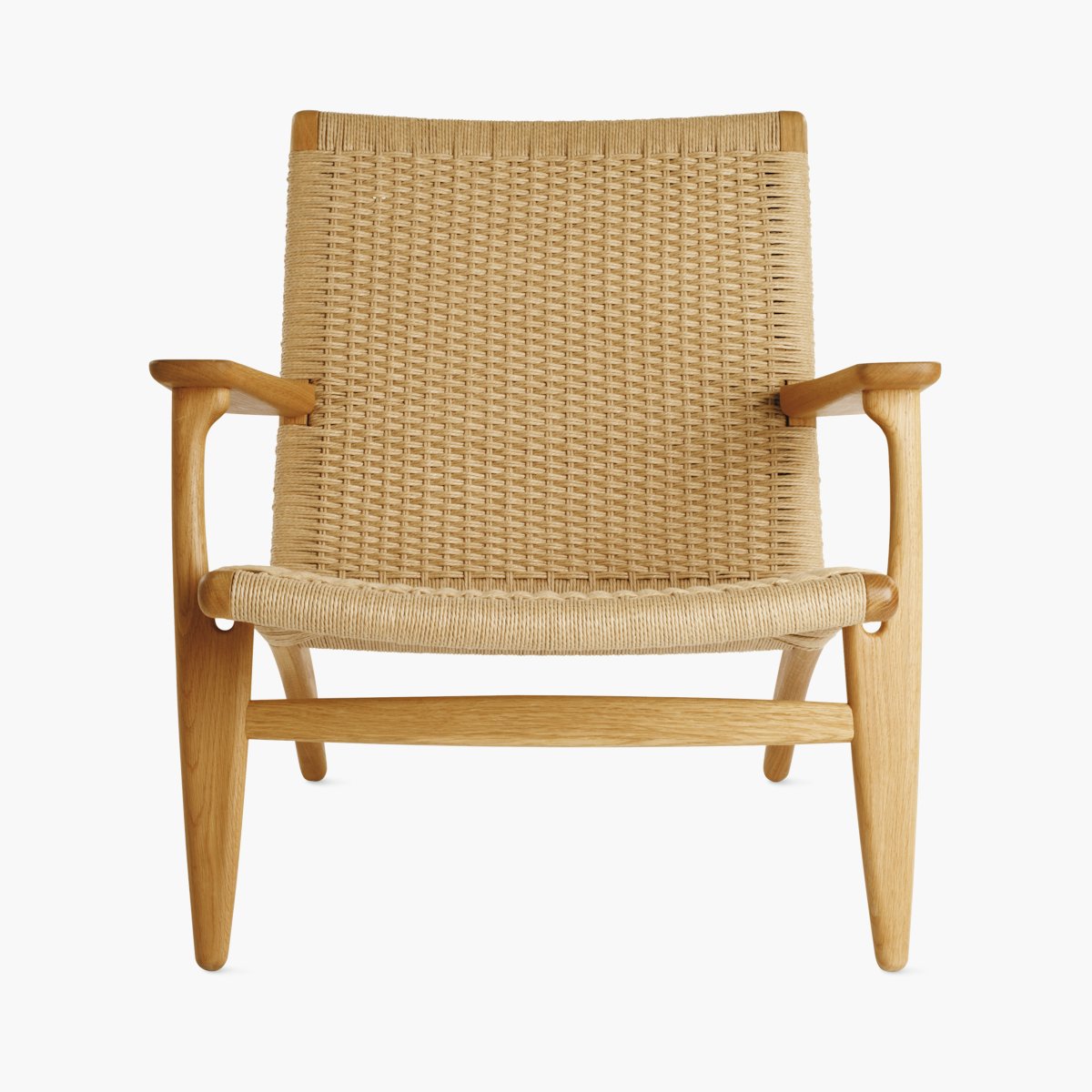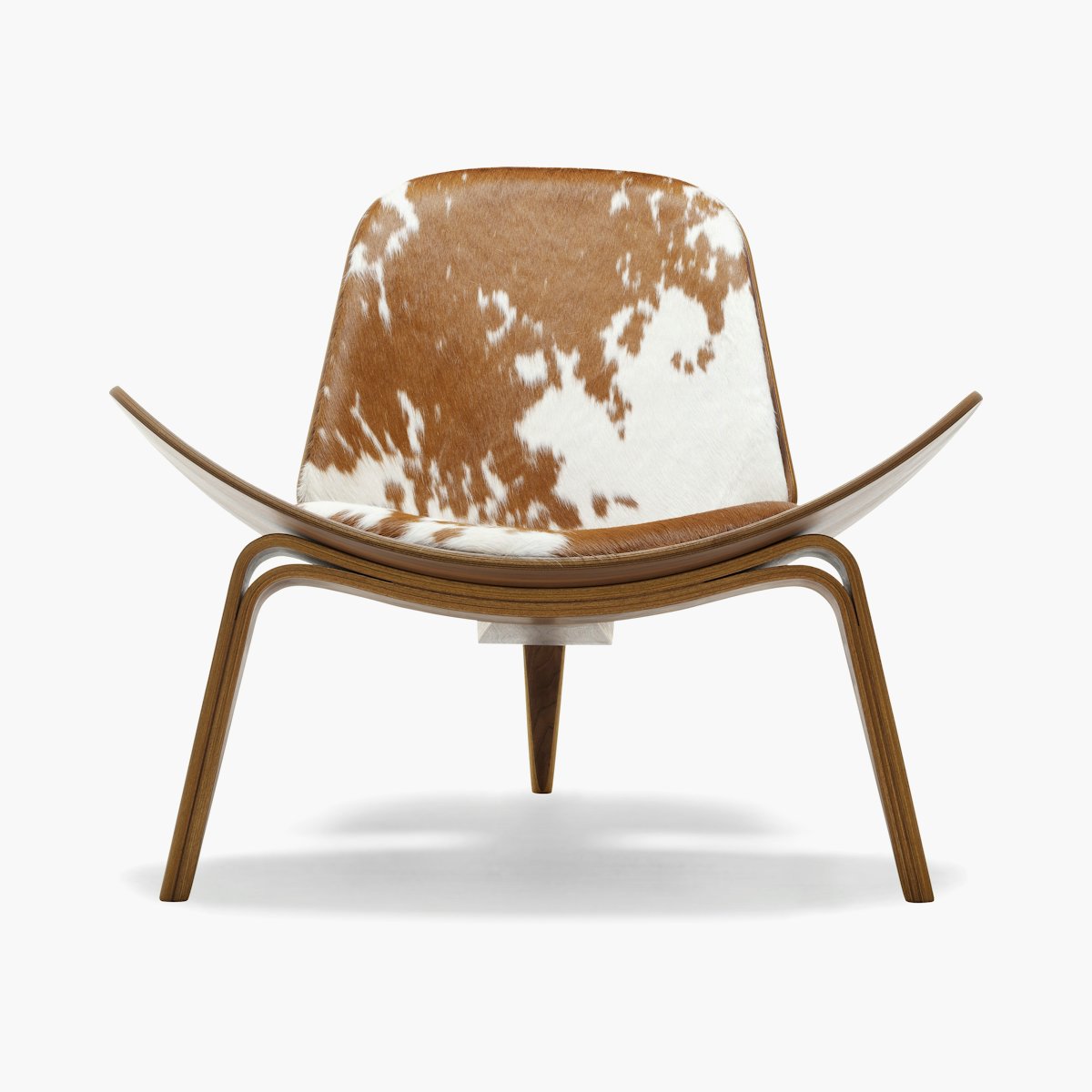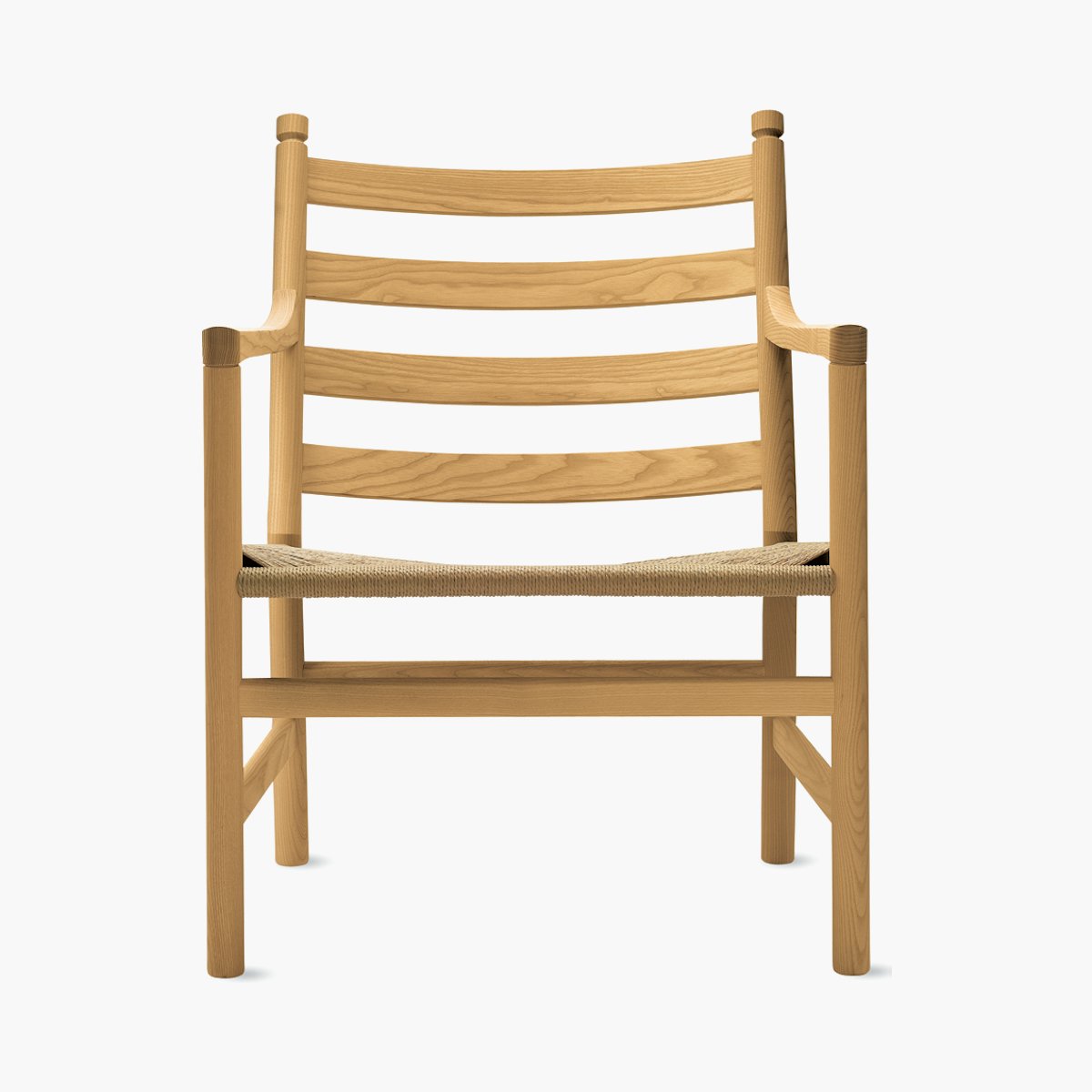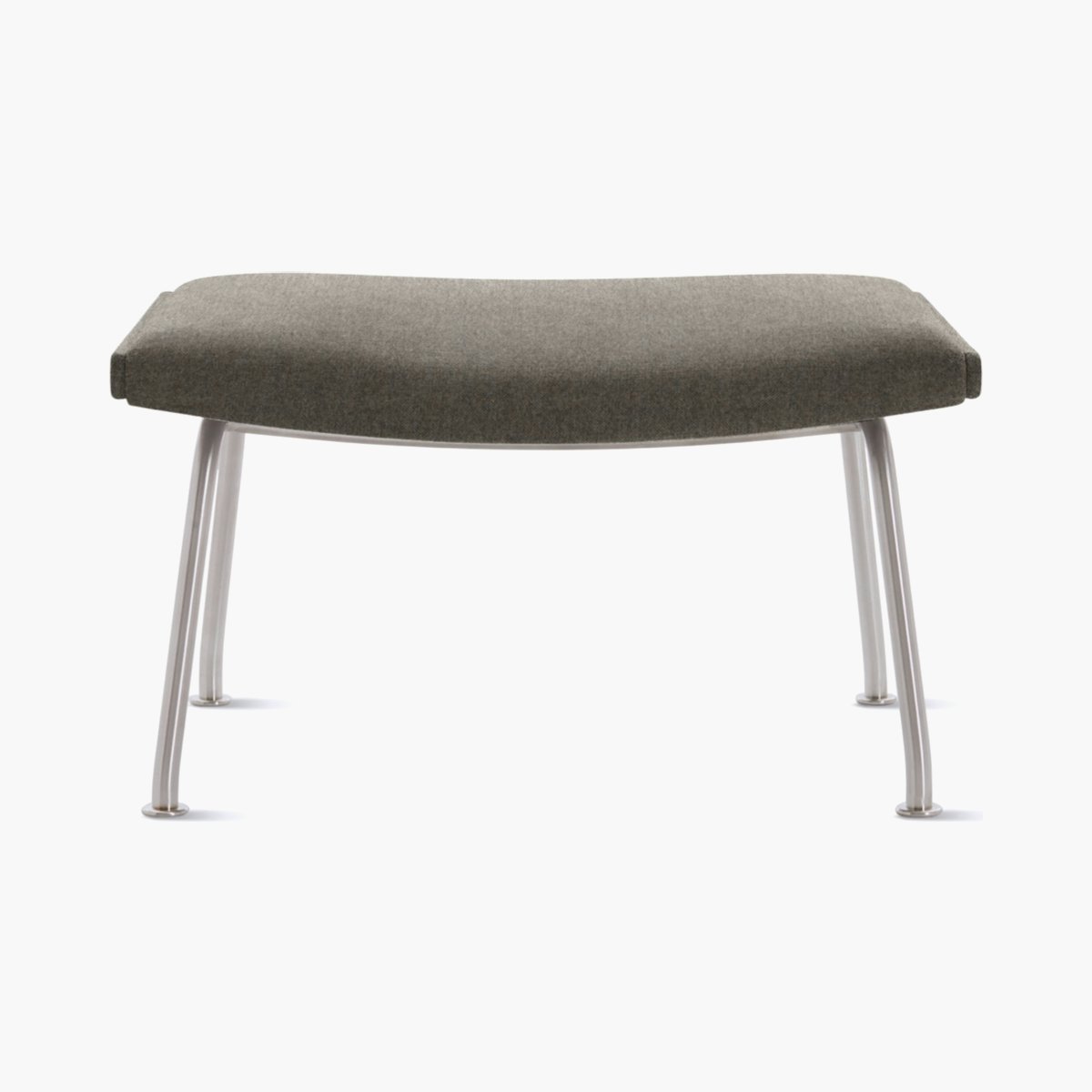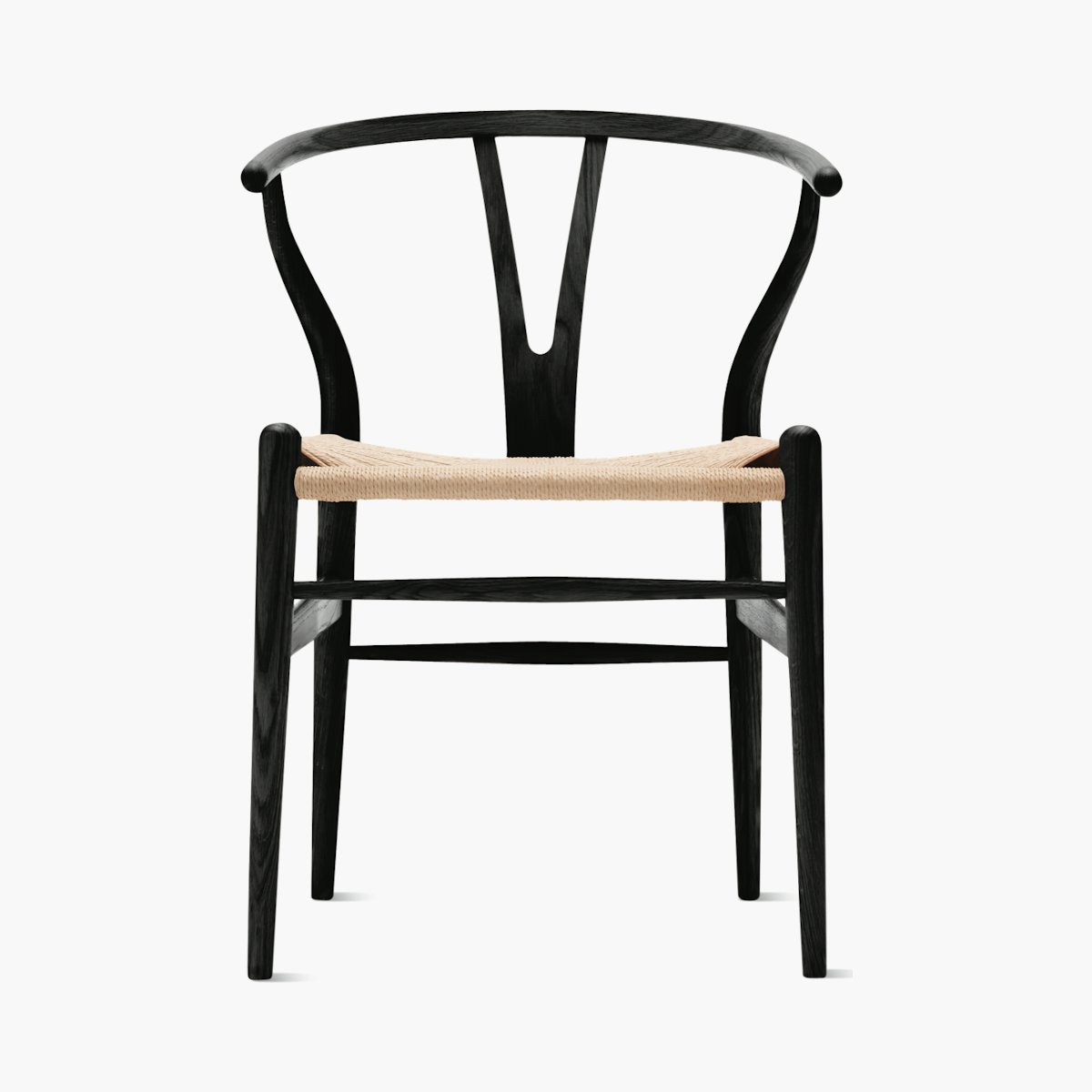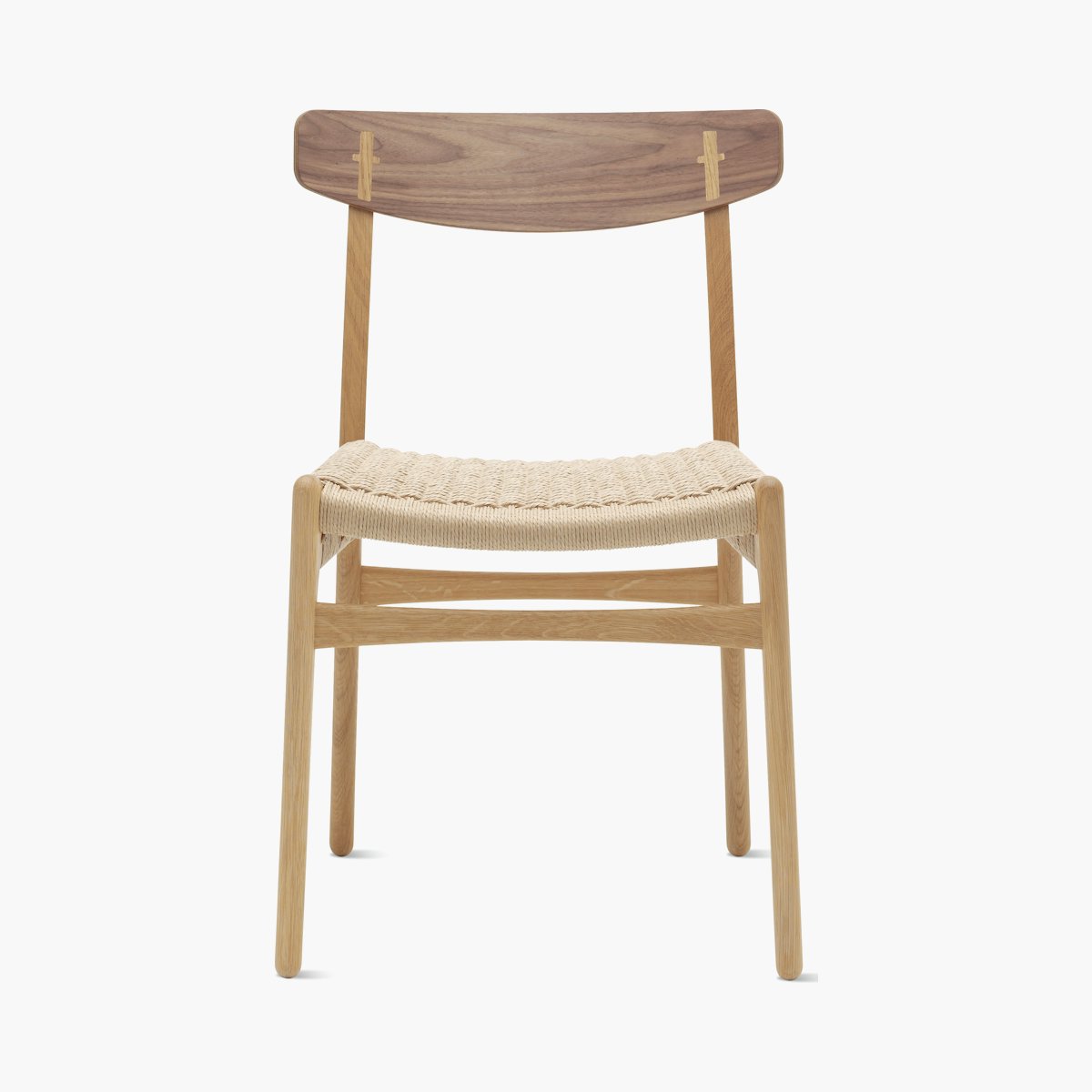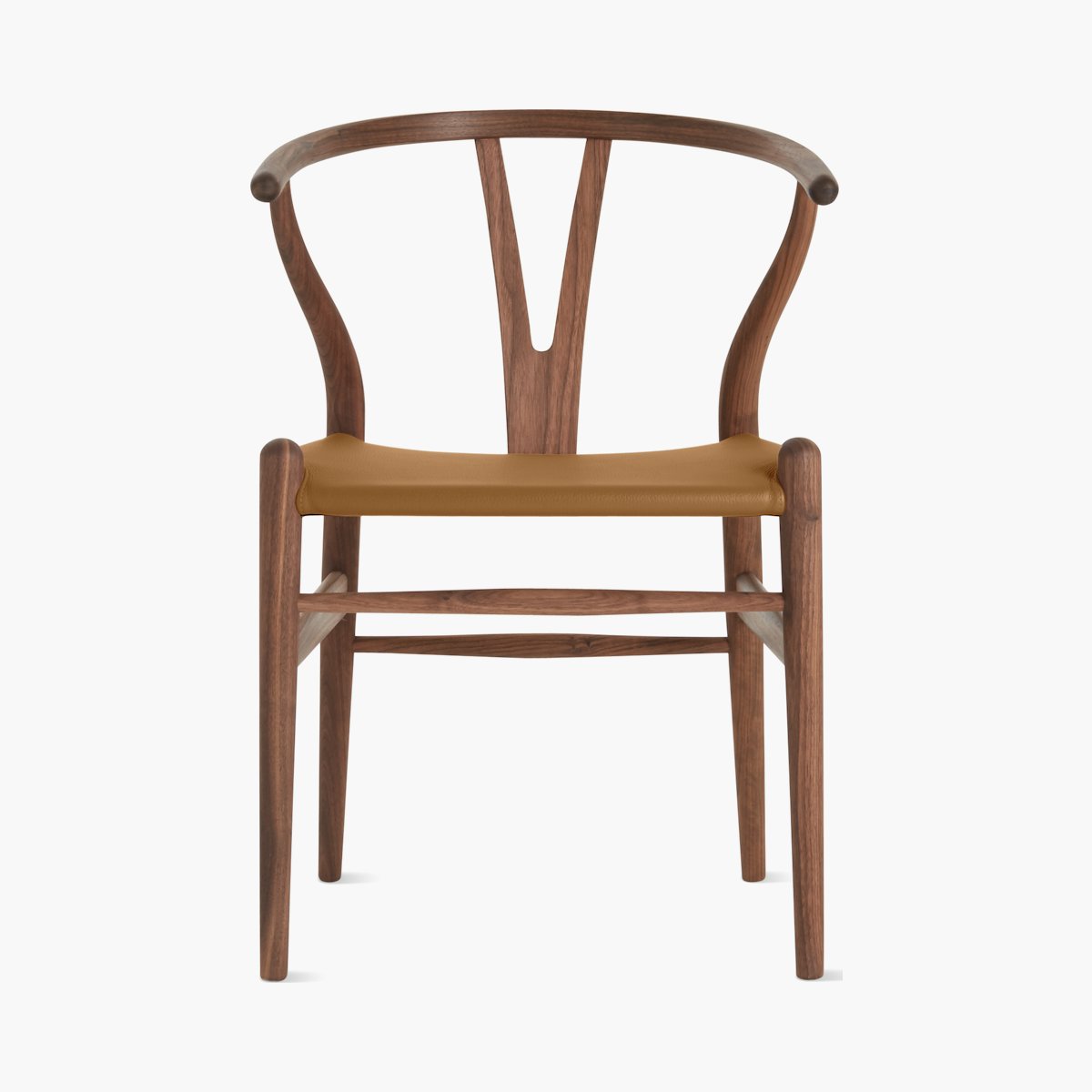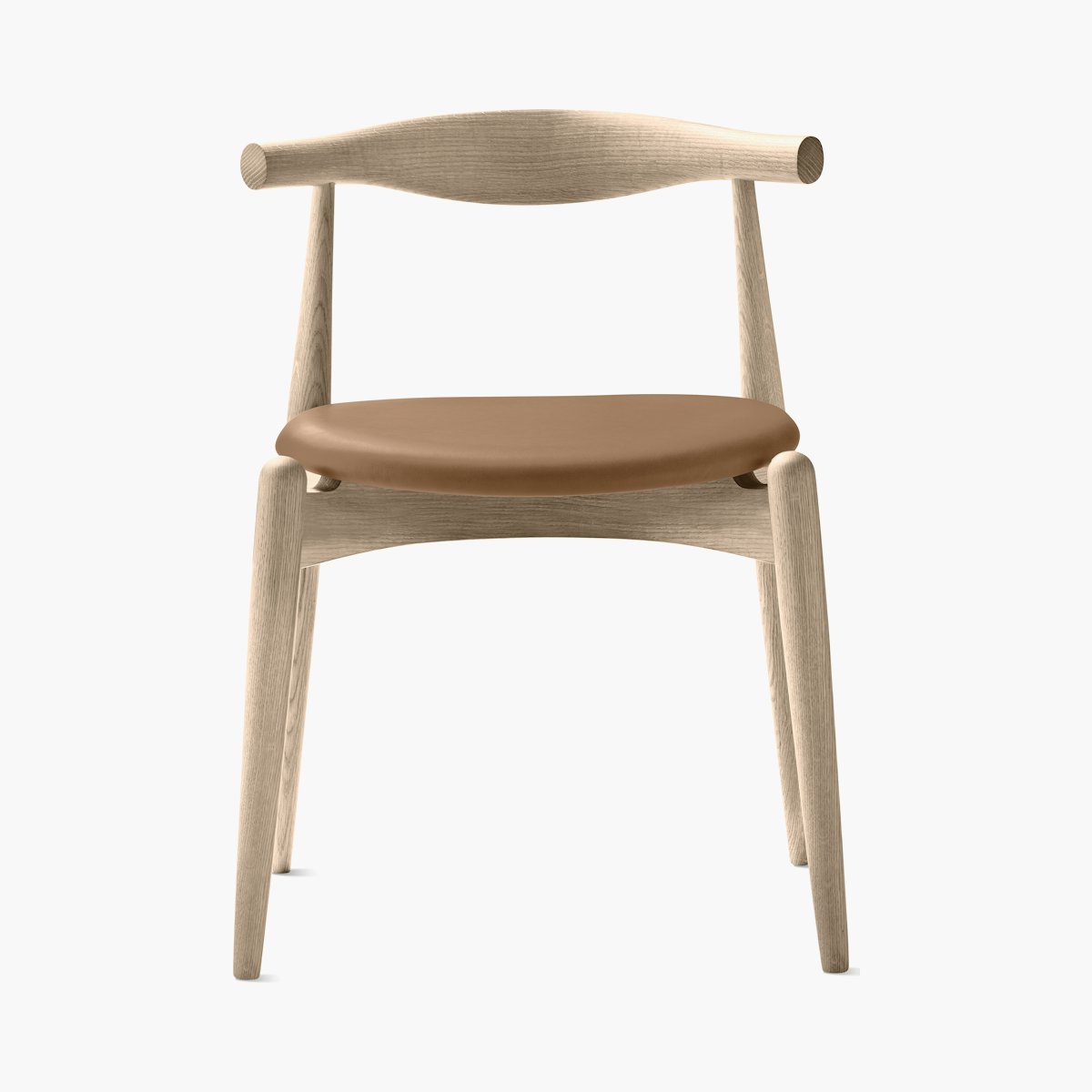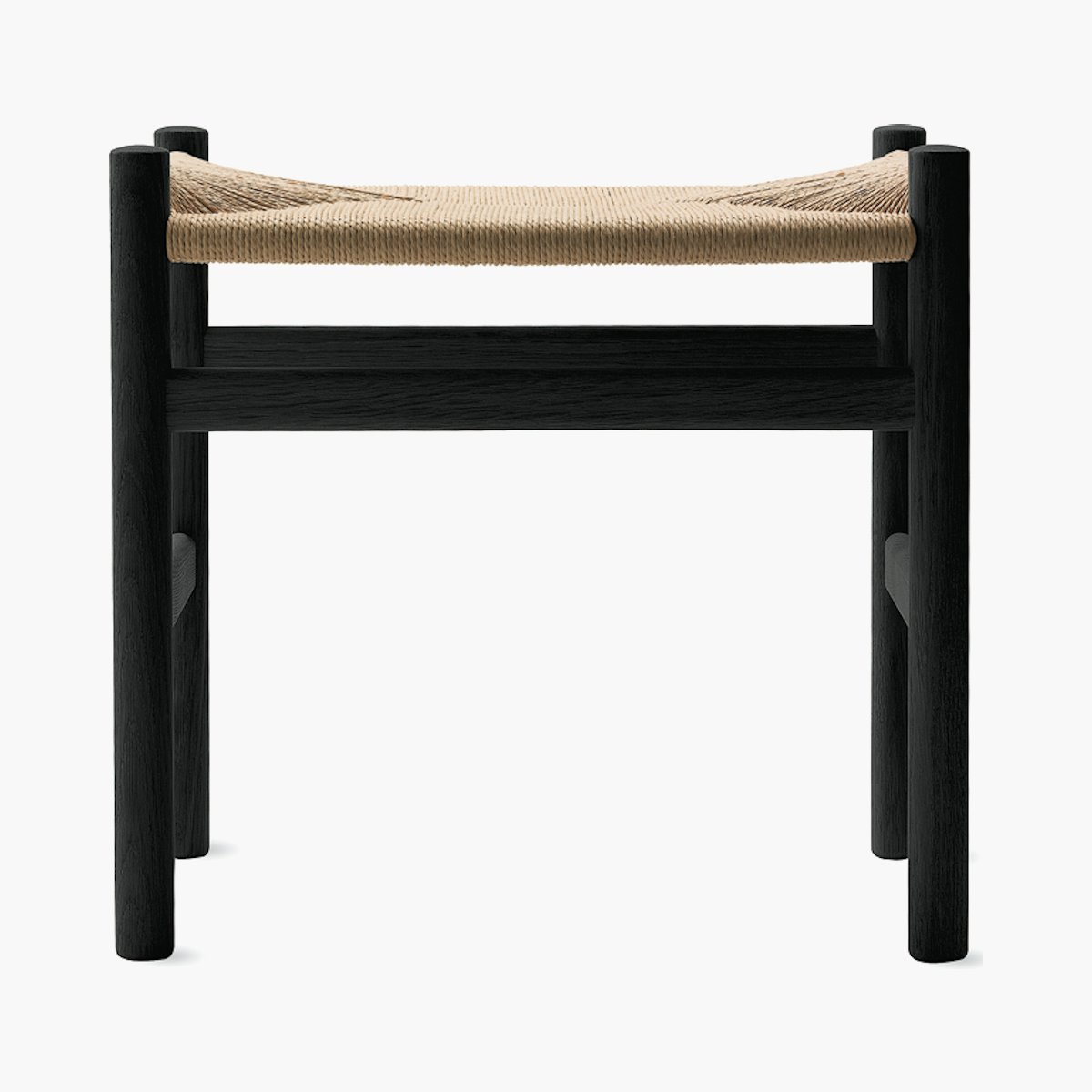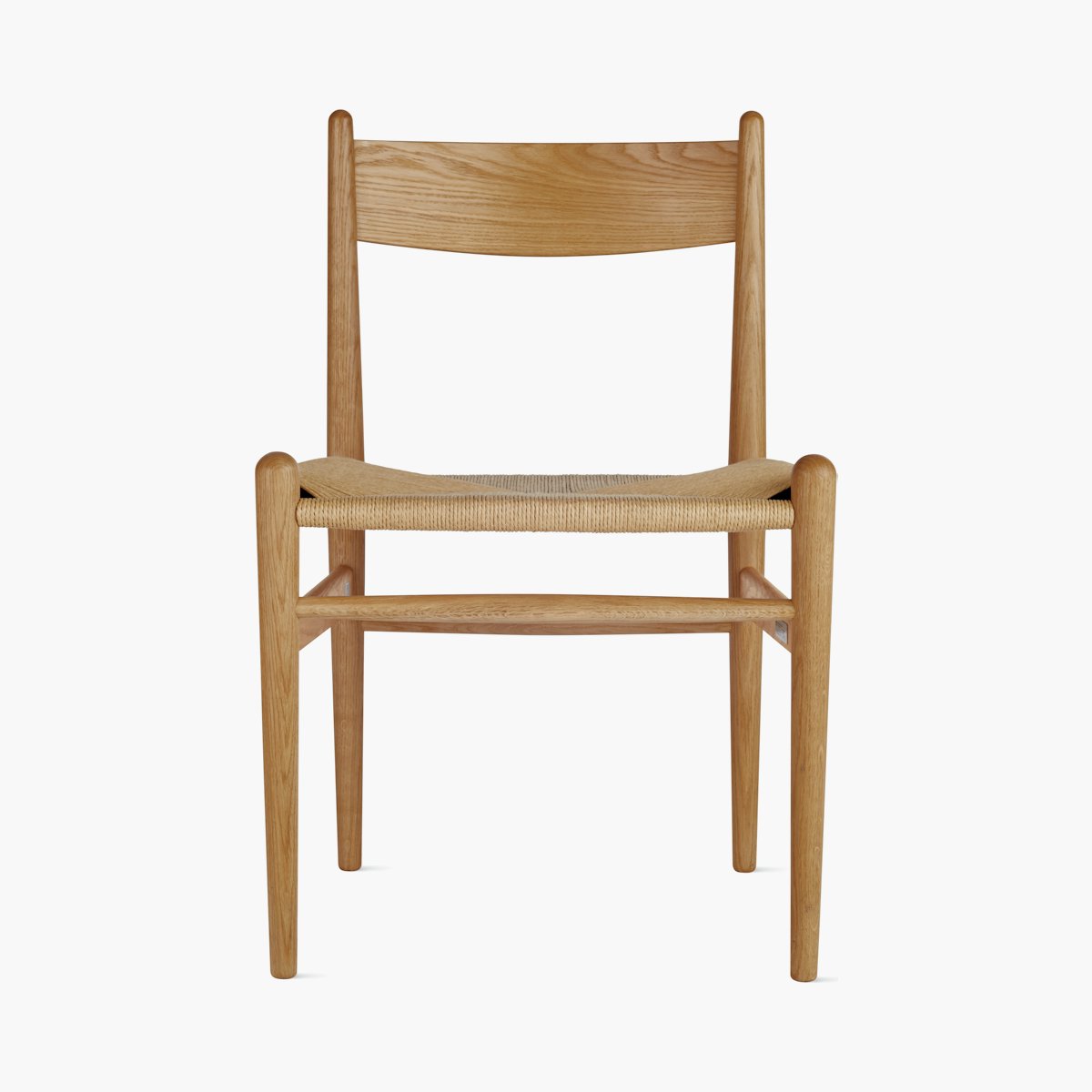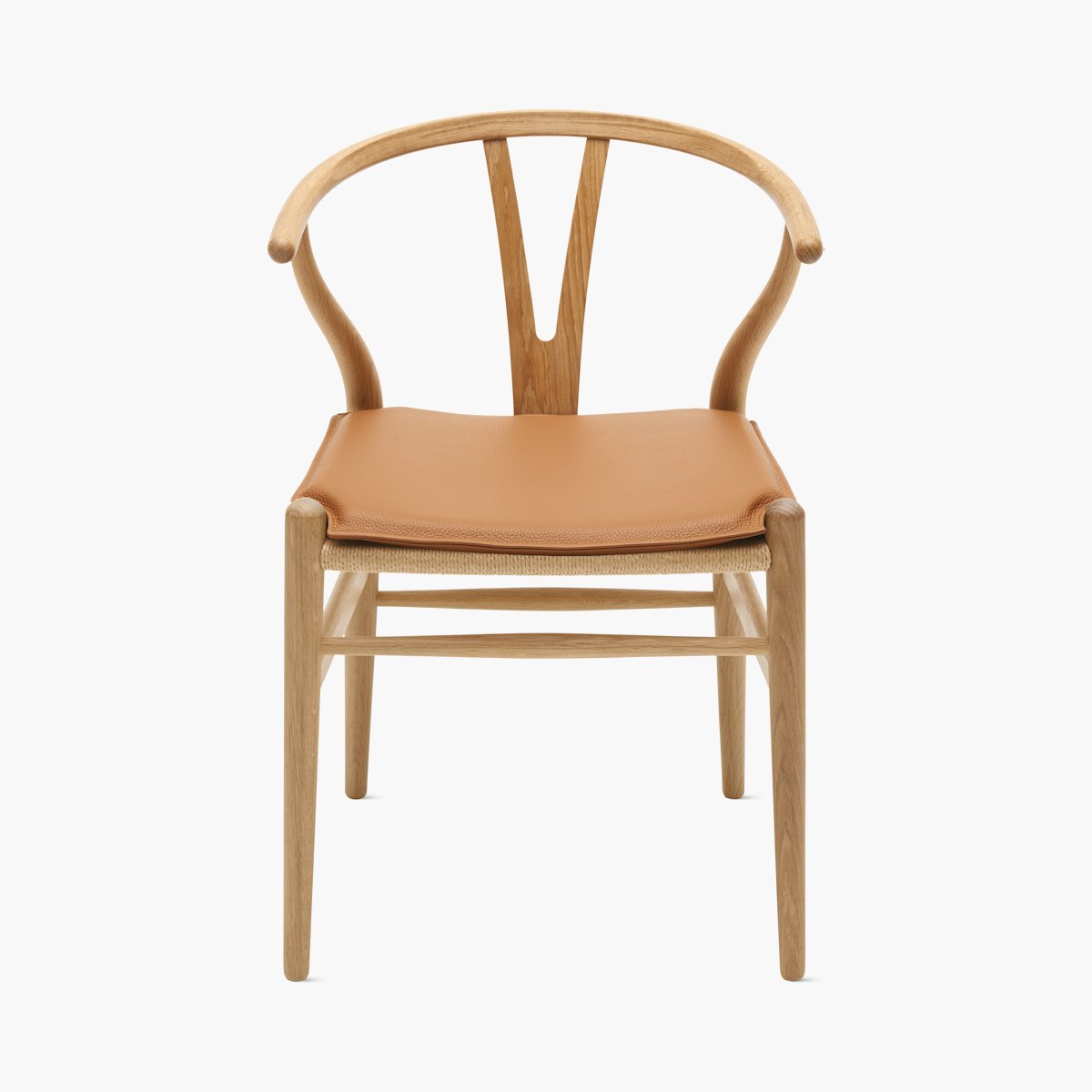Hans Wegner stands among designers Finn Juhl, Arne Jacobsen, Børge Mogensen, Poul Kjærholm and Verner Panton as a master of 20th-century Danish modernism. More specifically, he was instrumental in developing a body of work known as organic functionalism. His early training included both carpentry and architecture, and in the early 1940s he worked for Erik Møller and Arne Jacobsen designing furniture for the Aarhus City Hall, in Aarhus, Denmark, before establishing his own furniture studio. Until the 1960s, Wegner typically collaborated with cabinetmaker Johannes Hansen to realize his designs, most notably gracefully tapered and curved solid-wood chairs, often composites of wood and woven rattan or leather. He occasionally experimented with laminates, as in the Three-Legged Shell Chair (1963), or steel and oxhide, as in the Ox Chair (1960) for Erik Jørgensen. While he is best known for his chairs, Wegner has also created memorable cabinetry, desks, tables, beds and lighting.
The debut of the Peacock Chair (1947) at the Cabinetmakers’ Guild of Copenhagen was a turning point in Wegner’s career, and from then on his work was in demand. For years he was compelled to produce a new chair for the show each spring, designing such well-known pieces as the Folding Chair (1949), the Round Chair (1950) and the Flag Halyard Chair (1950), completing over 200 chairs in all. He frequently turned to traditional furniture for inspiration for his modern designs. The Chinese Chair (1944) draws on 17th-century Chinese seating, while the Peacock Chair, with its fanlike back, recalls the hoop form of the Windsor chair.
Over the years, Wegner perfected the design and production of his work, although the entire process remained lengthy. The Danish King, Frederick IX, waited two years for a four-legged Valet Chair (later versions had three legs) while Wegner tested the prototype at home. It is so-called because the hanger-shaped chair back is designed to keep a jacket wrinkle-free and the seat tilts up for use as a pants hanger, revealing a box for cuff links, keys and watches. Wegner’s preferred method of working was to start with a sketch from which he would make a 1:5-scale model and then a full-scale model. Before beginning production, each piece of furniture was drawn at full scale on a single sheet, with the drawings – two elevations and a top-down view – superimposed on one another.
The debut of the Peacock Chair (1947) at the Cabinetmakers’ Guild of Copenhagen was a turning point in Wegner’s career, and from then on his work was in demand. For years he was compelled to produce a new chair for the show each spring, designing such well-known pieces as the Folding Chair (1949), the Round Chair (1950) and the Flag Halyard Chair (1950), completing over 200 chairs in all. He frequently turned to traditional furniture for inspiration for his modern designs. The Chinese Chair (1944) draws on 17th-century Chinese seating, while the Peacock Chair, with its fanlike back, recalls the hoop form of the Windsor chair.
Over the years, Wegner perfected the design and production of his work, although the entire process remained lengthy. The Danish King, Frederick IX, waited two years for a four-legged Valet Chair (later versions had three legs) while Wegner tested the prototype at home. It is so-called because the hanger-shaped chair back is designed to keep a jacket wrinkle-free and the seat tilts up for use as a pants hanger, revealing a box for cuff links, keys and watches. Wegner’s preferred method of working was to start with a sketch from which he would make a 1:5-scale model and then a full-scale model. Before beginning production, each piece of furniture was drawn at full scale on a single sheet, with the drawings – two elevations and a top-down view – superimposed on one another.
Filters
Filters
12
Results
12
Results
View
Sort By –
$1,695.00
-
$2,195.00

